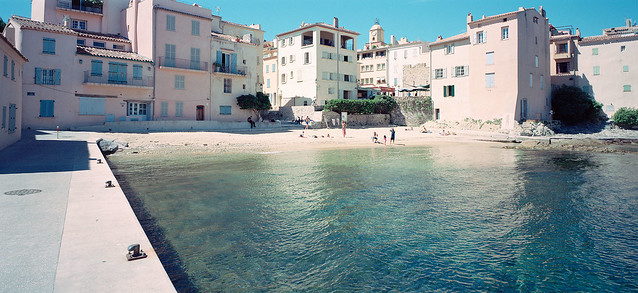Using the Flextight X5 scanner
Those grapes up there, they’re sour
This is an addendum to my two previous posts comparing the Plustek OpticFilm 120 to the Hasselblad Flextight X5. The X5 is supposed to be the nirvana of desktop scanners, a dream machine with a nightmare price tag, which provides the benefits of a drum scanner with none of the downsides, such as fluid mounting, even huger cost, and elephant-level proportions.

X5 workstation at Light & Byte

The 612 holder latched up and ready to roll
X5/Flexcolor interpretation of Kodak Provia 400
Plustek/Silverfast interpretation of Kodak Provia 400
I don’t think either are fully accurate (actually, the Silverfast version suffers from using Multi-Exposure, which doesn’t play nice with Negafix - the marketing material doesn’t tell you that). So, I could do better “out of the box” from the Plustek. Even as it stands, to my subjective eyes the Plustek/Silverfast version looks more like how Provia is supposed to look, The X5/Flexcolor version is almost Velvia, and too neutral. Of course, Silverfast is regularly updated. Flexcolor isn’t.
On the plus side, Flexcolor coupled with the X5 can really pull out clean shadow detail to an extent I’ve never seen before from a film scanner. Of course that is limited by the exposure range of the film, so it is more useful for negatives. But still, the difference is clear.
Generally Flexcolor feels old and fairly clunky, but I suppose that is because it is old. The X1 & X5 scanners are just rebadged Imacon Precision 848 and 949 models, which Hasselblad inherited when they bought / merged with Imacon to get digital back technology. They’ve carried on selling them, but they certainly haven’t tried very hard. I reckon they could drop the price by 50% and quadruple their sales, and still make a decent profit. They’re just not interested. The only update to the hardware is case redesign and a Hasselblad logo. The backplate is still branded “Flextight Precsion”. And the backplate also features a Firewire 400 interface, the one and only port, fully obsolete. At least it isn’t SCSI. The Mac Pro running the X5 at Light & Byte is running Mac OS X Snow Leopard, which must be 8 years old or something.
So, is the X5 worth €25’000 ? No, unless you’ve got a business model which will subsidise it, or you work for a Swiss bank or something. Is the X1 worth €16’000, then ? I don’t think so - it loses the X5’s diffuse light source, it’s slower, and (if this matters to you) it can’t do batch scanning, or, indeed reflective scanning (which I really doubt is a major selling point of the X5, but whatever). If Hasselblad were showing some sign of continuing development, even if just to add a USB3 interface, and updating Flexcolor, then just maybe it could be considered a long term investment, but I would even be concerned that it will continue to work with current operating systems for much longer.
After all, Hasselblad recently named their new pride and joy camera the “X1D”. Presumably they didn’t even remember they’ve already got an X1 in the catalogue.


